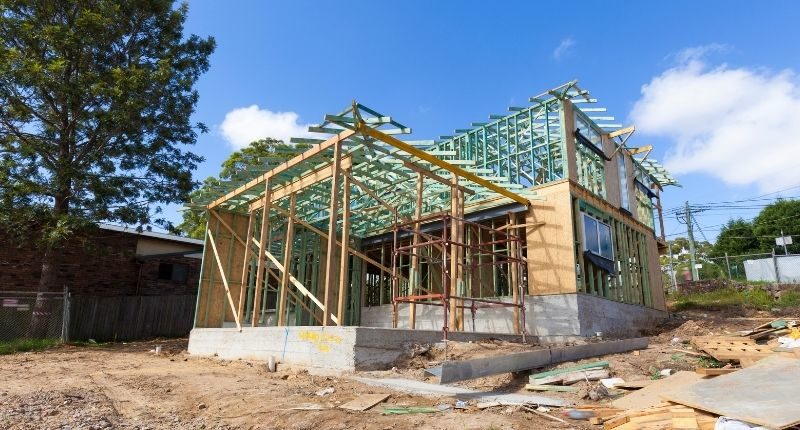
- Economic stimuli, like the HomeBuilder program, increased demand for materials significantly
- This coincided with global supply disruptions
- The price of materials has grown at its fastest rate since the 1970's
New data from the National Housing Finance and Investment Corporation (NHFIC) has analysed the impact the market forces of supply and demand has made on building cost inflation during the pandemic.
Where it all began
Amid March 2020, when the world first truly began to understand the severity of the pandemic, the federal government announced a wave of economic stimuli. This notably included the HomeBuilder scheme, which offered large grants for those building new homes or substantially renovating existing homes.
At various stages throughout 2021, this fiscal stimulus gradually began to be withdrawn, as has ultra-low interest rates.
The pandemic has also seen significant global supply chain disruptions, which has impacted the supply of building materials to the construction industry.
Building material costs have recorded their fastest pace of growth since the 1970s. The cost of labour has seen a dramatic increase too, although at a slower pace compared to materials.
Building material and labour cost inflation

Over the past year, structural timber, plywood, steel reinforcement and structural steel costs have all increased by more than 25%.
The data shows it is too early to tell whether cost pressures have peaked. During the June quarter, there was also strong increases in timber doors and windows, metal garage doors, insulation, structural timber, mirrors and plywood.
Given metal, timber and ceramic products are the primary materials used in residential construction, each of these items have risen strongly over the year Notably, steel recorded the greatest increase (42%) however, steel is used less intensively.
Materials used in house building weights and inflation in Q2 2022

Around 83% of the material cost inflation during the 2022 fiscal year was driven by supply constraints. This suggests that cost pressures may persist even as higher interest rates theoretically slow demand.
By contrast, during the early phase of the pandemic, demand was the major driver of cost inflation, accounting for 75% of cost inflation during the 2021 fiscal year.
Over the longer-term demand has impacted price increases more than supply. During the period NHFIC has analysed, material costs growth averaged 2.7% per quarter, with 0.6ppts driven by supply issues and 1.00ppts due to demand.
The remaining 1.1ppts were in line with expectations.
Dominant players
The research noted that the Australian industry structure is dominated by duopolies and oligopolies, which may result in an increased proportion of price movements caused by supply.
For example, in hardware, Bunnings is the major player. This was reinforced by Woolworths’ failed short-lived Masters venture during the mid-2010s.
In the plasterboard sector, this is dominated by BGC, CSR, Gyprock, Etex (Siniat), Knauf and Winstone Wallboards. Only BlueScope Streel supplies rolled steel sheet, and Liberty One Steel is the only supplier of structural steel and reinforcing steel for reinforced concrete.
The main redi-mix concrete suppliers (in different markets) are Hanson, Holcim, Boral, CSR Barro group and Hy-tech.
At least 30% of price movements in other electrical equipment, waterproofing materials, plastic pipes, concrete tiles and fibre cement products are driven by supply.
Changes in the margin charged by developers and builders can be estimated through the use of ABS data on construction industry labour and building material costs. The margin has increased sharply since mid-2021.
Residential construction costs and the homeowner purchase price








